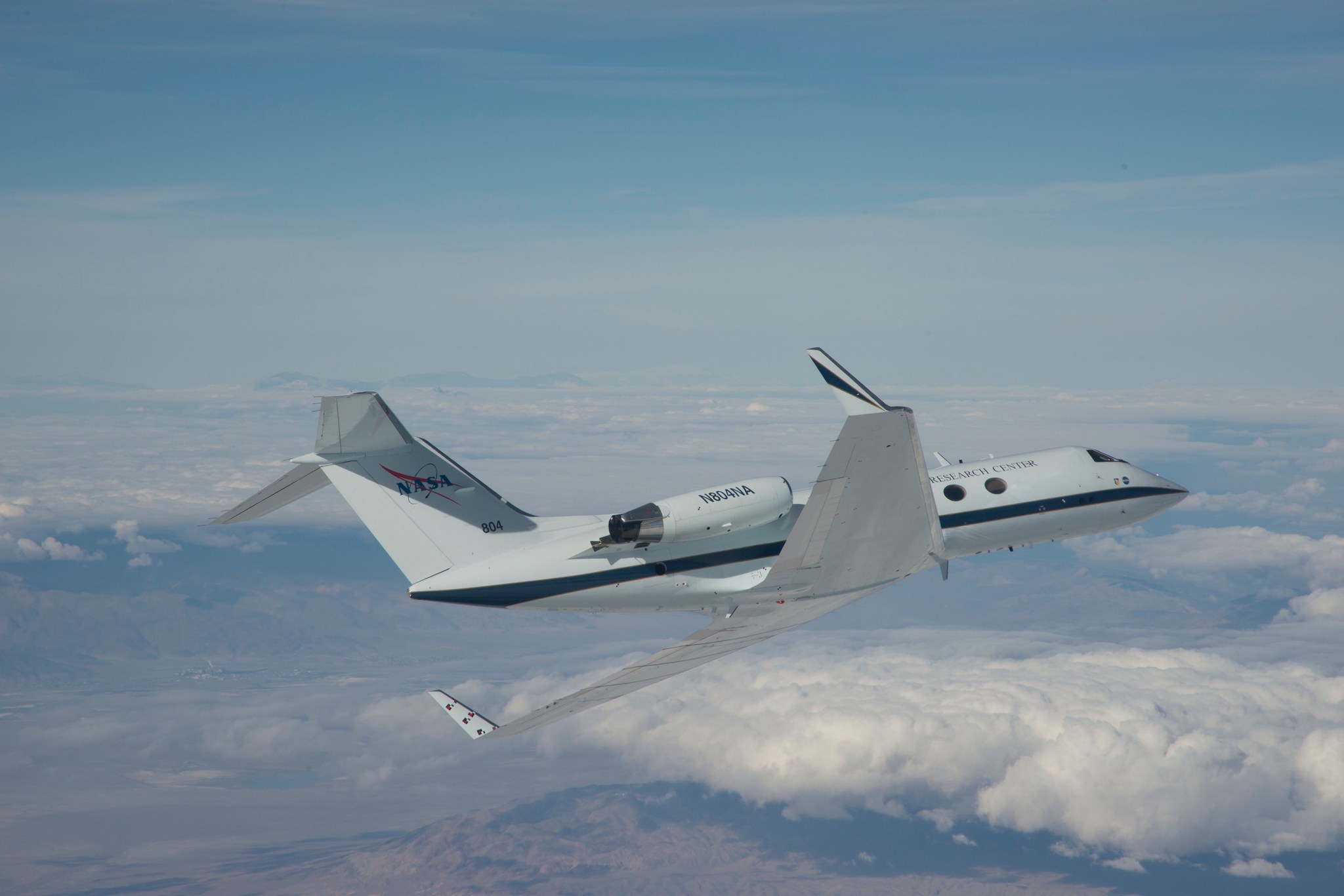
The Adaptive Compliant Trailing Edge (ACTE) project achieved a major milestone at NASA’s Armstrong Flight Research Center on February 18, when the modified Gulfstream G-III completed a flight with 15 degrees flap deflection, thus successfully meeting all of the project’s primary requirements. Flight tests have been performed with deflections ranging from zero to 15 degrees, with plans for flights up to 30 degrees of deflection. Although the flexible ACTE flaps are designed to morph throughout the entire range of motion, each test is being conducted at a single fixed setting in order to collect incremental data with a minimum of risk.
The ACTE project is a joint effort between NASA and the U.S. Air Force Research Laboratory (AFRL) at Wright-Patterson Air Force Base, Ohio, to advance compliant structure technology for use in aircraft to significantly reduce drag, structural weight, and aircraft noise. It is part of NASA’s Environmentally Responsible Aviation (ERA) project to explore and document the feasibility, benefits and technical risk of vehicle concepts and enabling technologies for reducing aviation’s impact on the environment.
Last year, researchers replaced the G-III’s conventional aluminum flaps with advanced, shape-changing assemblies that form seamless bendable and twistable surfaces. The revolutionary flaps were designed and built by FlexSys, Inc., of Ann Arbor, Michigan, with AFRL funding based on FlexSys patented technology.
“Reaching our minimum success criteria for the ACTE Integrated Technology Demonstration is a testament to the exceptional cooperation and collaboration toward the success of this flight campaign between NASA, AFRL and FlexSys, the inventor of the technology,” said Ed Waggoner, Integrated Aviation Systems Program Director in NASA’s Aeronautics Research Mission Directorate. “Every milestone we achieve helps us to better understand how these enabling technologies reduce aviation’s impact on the environment.”
ACTE technology has the potential to be retrofitted to existing airplane wings or integrated into entirely new airframes. ACTE enables engineers to reduce wing structural weight and to aerodynamically tailor the wings throughout the flight envelope to promote improved fuel economy and more efficient operations, while reducing environmental and noise impacts. Flight testing at Armstrong is key to proving the concept’s airworthiness.
































